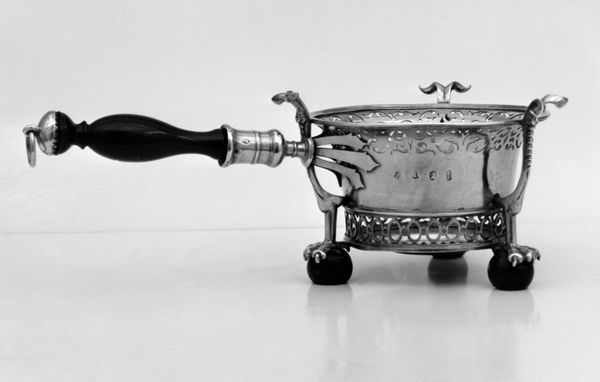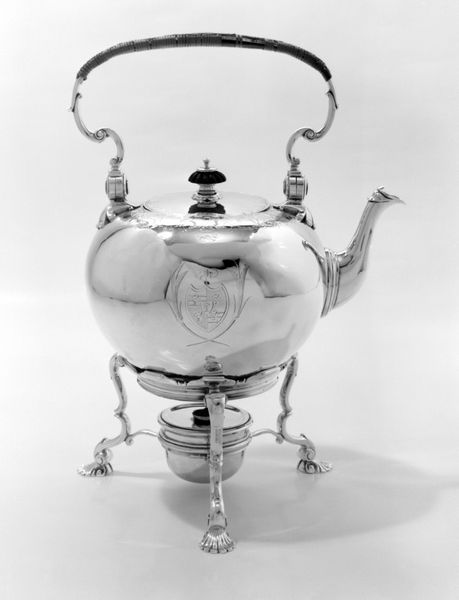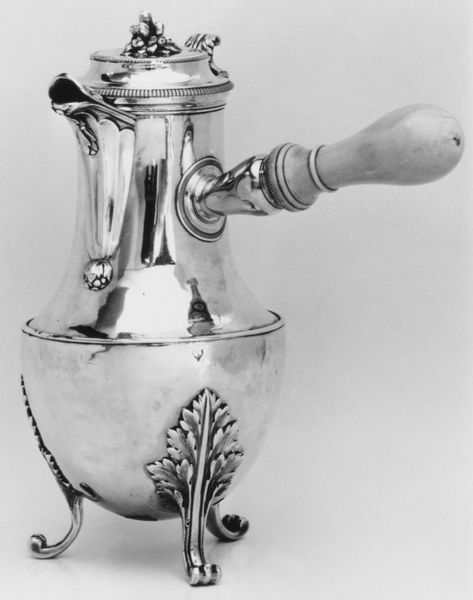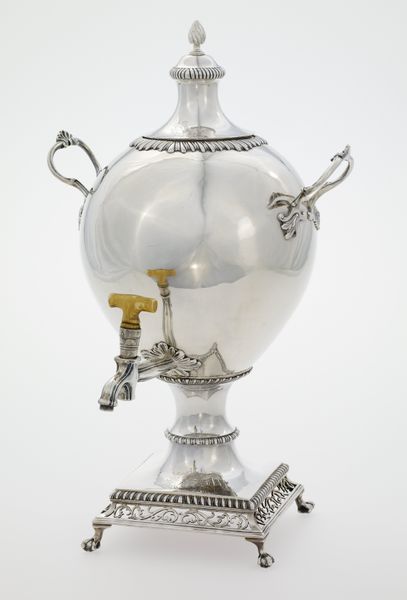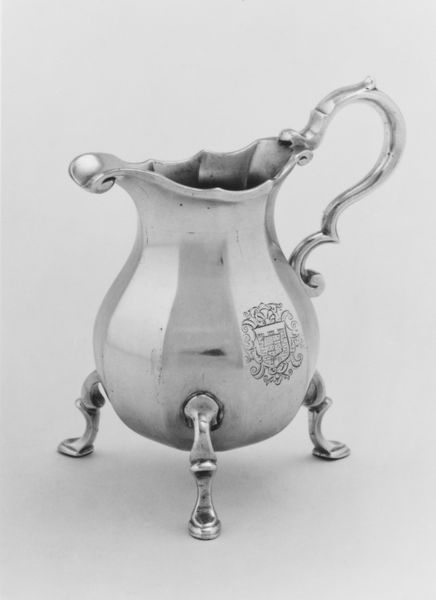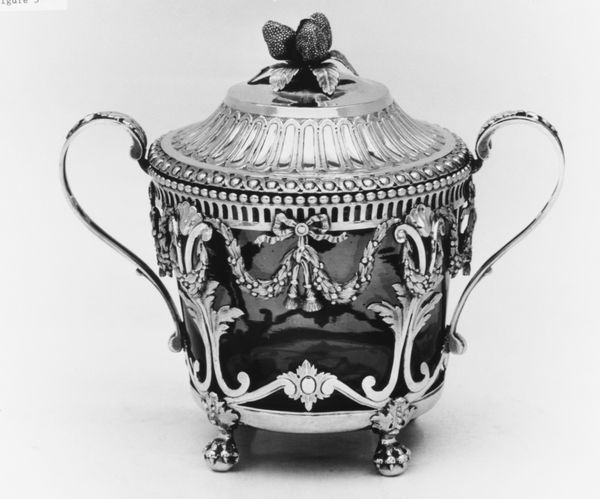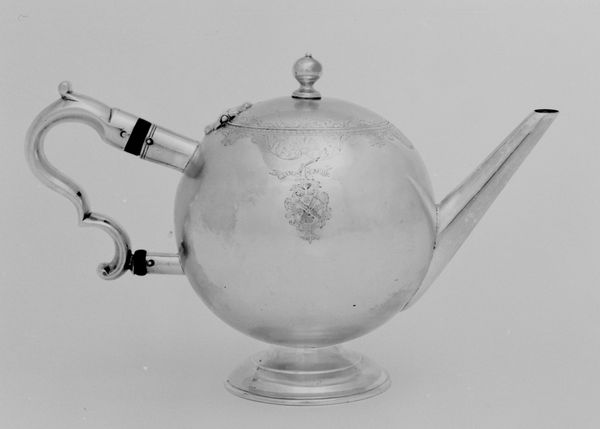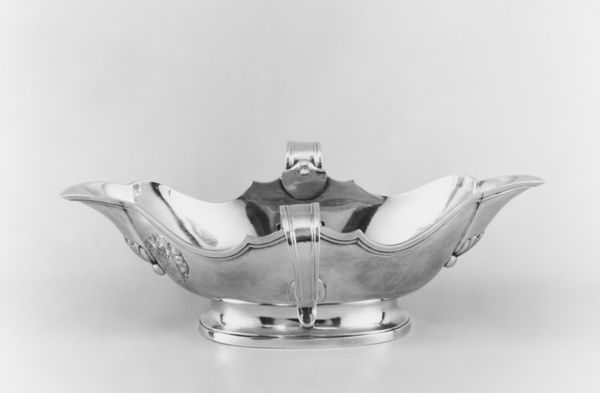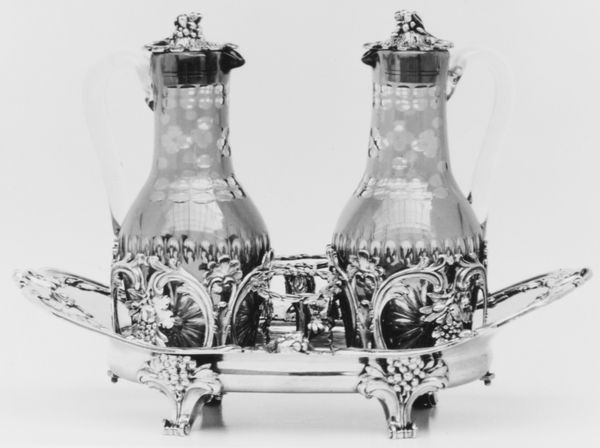
silver, metal, sculpture
#
silver
#
baroque
#
metal
#
sculpture
#
black and white
#
decorative-art
Dimensions: Overall: 4 3/8 × 10 × 5 3/8 in. (11.1 × 25.4 × 13.7 cm)
Copyright: Public Domain
Curator: This elegant object is a silver brazier, dating back to between 1700 and 1725. Editor: It feels surprisingly modern despite that age, doesn’t it? Almost Scandinavian in its minimalist form. The craftsmanship looks superb, although it's currently shown in monochrome so I don't quite appreciate the brilliance of the metalwork here. Curator: You're right, the silver's sheen is definitely lost in translation here. This brazier and its pair are wonderful examples of early 18th-century baroque decorative arts. Imagine the social context in which this object would be used: opulent dinner parties, perhaps, displaying societal hierarchies through elaborate dining rituals. Editor: Exactly, this isn't just about aesthetic beauty. How would this object be fabricated? We see the metalwork, but there is the carving involved in the making of the feet, and the handle. These indicate diverse artisan skills to craft and assemble it. And what labor relations underpinned that production? Curator: Absolutely. These decorative arts weren't merely objects; they embody cultural values, social structures, and the narratives of gendered labor within the decorative arts sphere. Editor: It makes one think about the cultural and economic flows that brought silver to wherever this piece was crafted. How were these raw materials extracted, transformed, and circulated to enable this very object’s creation and its role in that lavish, hierarchical culture you evoked? Curator: Yes! This brazier functions as a site where gender, class, and colonialism converge. These elaborate serving practices helped elite society visually separate itself. What was cooking in these braziers, who prepared it, and who had access to this display? All relevant questions here. Editor: Indeed. By emphasizing materials and process, the brazier speaks volumes about production networks and how labor becomes literally inscribed in art. I wonder if its creators ever thought about such conversations surrounding their creation? Curator: What these artifacts communicate continues evolving across generations, especially if these works become touchstones to re-examine issues of power and social structures within historical contexts. Editor: Agreed, what the brazier has told me about its materials and making is one thing, but these thoughts only open wider considerations about value, consumption, labor, and materiality itself.
Comments
No comments
Be the first to comment and join the conversation on the ultimate creative platform.
